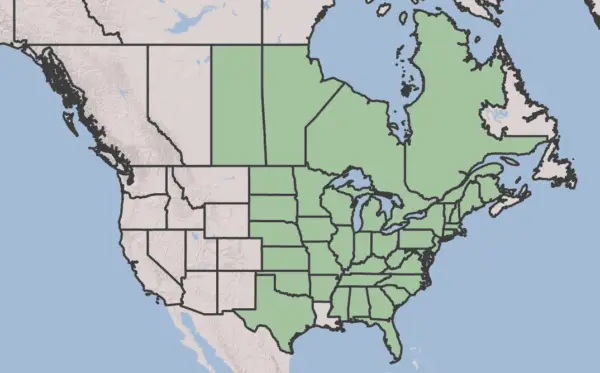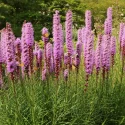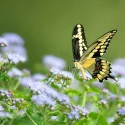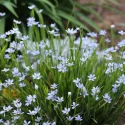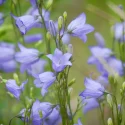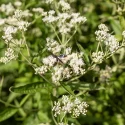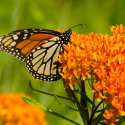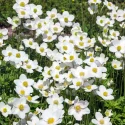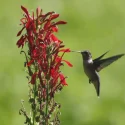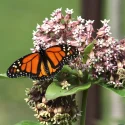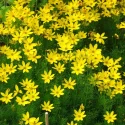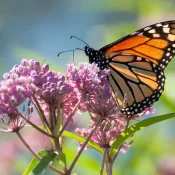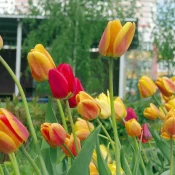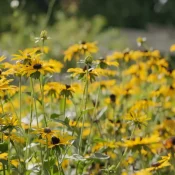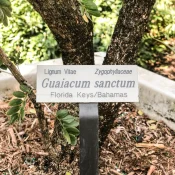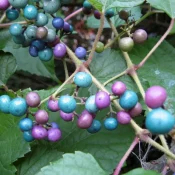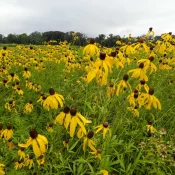Red Columbine
This delicate native plant flowers to coincide with the arrival of its main pollinator: ruby-throated hummingbirds. Each red-petaled flower hangs down, revealing a vibrant yellow interior whenever the wind blows. The shape of the flower is perfectly shaped for hummingbird beaks. They are exceptionally easy to grow and like part-shade to full sun. Plant them together in clumps to bring bright color and hummingbirds to your yard.
- Part Sun, Full Shade
- Short (under 3')
- Spring flowers
- Hummingbird favorite

Red Columbine is a great plant for beginner gardeners—it’s adaptable to many different soils, grows in sun or shade, and it’s a stunner in the bargain. Read on to find out more about this pretty native wildflower.
What are the benefits of planting Red Columbine?
Red Columbine is beautiful. In the spring, it has bright, firecracker red-and-yellow flowers that dangle like little rockets. They often last for about a month! In the rest of the summer, it has attractive green shamrock-like leaves. In the fall, the leaves turn yellow.
Red Columbine is important for native pollinators, and it attracts hummingbirds! Red Columbine flowers are a critical source of nectar for ruby-throated hummingbirds as they return north in spring on their long, difficult journey from Central America. (Hummingbirds are well known for loving red plants, and Red Columbine is probably a big reason why.)
The flowers also feed bumblebees and the magnificent Hawk Moth—the largest moths in the world. Columbine is even a host plant for a native butterfly named after it, called the Columbine Duskywing.
Red Columbine is tough and easy to grow. Native plants like Red Columbine have lived in North America for thousands of years. Every drought, blizzard, or weather event, they have lived through. They know (and thrive!) in the soil and weather of their home area. All they need is rain to thrive.
Native plants are always the most resilient, easy to care for, and beautiful choices for landscaping. They require minimal care (especially compared to lawns!) and can return decades of beauty.
Added bonus: Red Columbine is drought tolerant
This plant thrives with neglect once it’s established after the first year. The Birdeyes—a couple devoted to native plants (and owners of Birdseye frozen veggie empire!) said it simply in their book Growing Woodland Plants:
“Requires almost no care and spreads rapidly by seed. Its perennial rootstock goes deep into the soil and enables it to survive even the worst droughts.”
This is great to hear, especially for all of us gardeners who originally thought we had “black thumbs” when it came to plants. Planting Red Columbine helps make beautiful gardening easier than non-native plants, while helping hummingbirds thrive.
Another added bonus: Red Columbine is deer-proof
Deer do NOT eat Red Columbine! If you’re worried about deer nibbling your garden, these are a perfect native plants.
How do you plant Red Columbine?
Red columbine is native to almost every state east of the Rockies. It is hardy from zones 2-9, an unusually huge range.
In drier, hotter areas, it will grow low, 6-12 inches; in moist, rich soils, where it is happiest, it can get as high as 3 feet tall.
It thrives in anything from full to part sun to shade. (In nature, it lives in partly shaded forests.)
Red Columbine can thrive in many different kinds of soil, but it does need to be well-drained. To use a quote from Harriet Keeler’s 1916 book on wildflowers: “The Columbine dwells of choice on sunny, rocky slopes in open woods where soil is sparse and well drained.” For gardens today, this means that hillsides, rock gardens, and sloping gardens are perfect places for this native gem. But you can grow it anywhere that is not soggy.
Plant Red Columbine in shade gardens, woodlands, borders, or cottage gardens. It mixes nicely with other shade plants, like ferns, trilliums, or Wild Geranium; with spring bulbs like daffodils and tulips; or in a cottage-style garden with native irises and Bee Balm.
Plant 3-5+ to attract hummingbirds
For attracting hummingbirds and pollinators, experts recommend planting at least 3-5 of the same plants together. This helps them find food faster.
Where is Red Columbine native?
Red Columbine is native to more than half of the United States: from Maine to Florida, and west to Texas. It is also native to 3/4 of Canada.
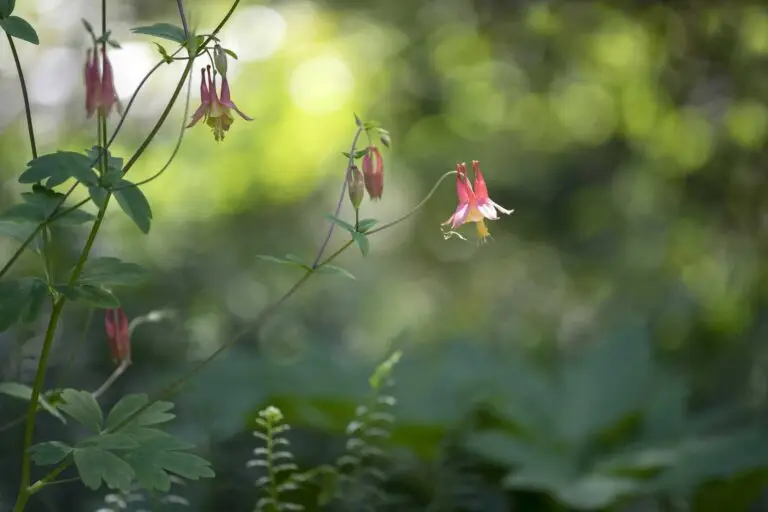
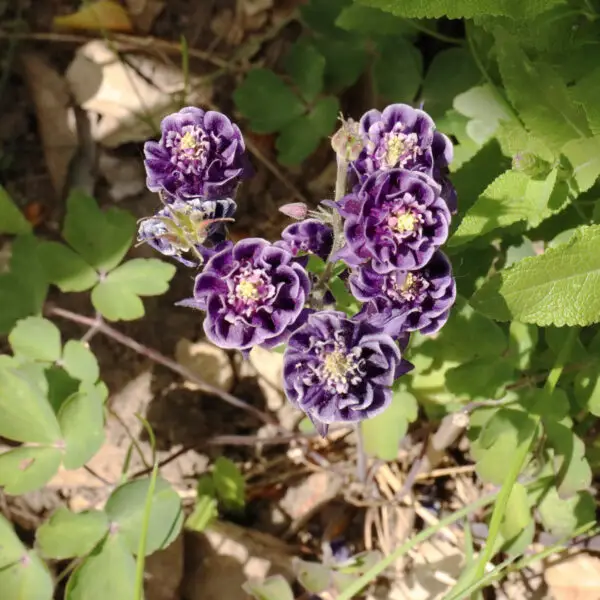
I think I saw this plant for sale, but the flowers weren’t red?!
You may be seeing the Rocky Mountain Columbine (Aquilegia caerulea), which is blue, or the Golden Columbine (Aquilegia chrysantha), which is yellow. Learn more about different columbines native to the U.S.
Or if it’s a different color: Columbine is well known for crossing freely with related species, so you can get them in all shades of colors, from purple to orange to pink.
These hybrid plants aren’t generally harmful, but sometimes they come out sterile and provide no nectar or pollen for native pollinators. (This is especially the case for “double” flowers, unfortunately). And if you want hummingbirds, you’ll definitely want to stick with the original red “straight species” flowers, which are like a big neon DINER OPEN sign to them.
How do I find Red Columbine?
It’s not always easy to find native plants in garden centers, but Red Columbine is so beloved that it can often be found, even in big-box stores like Home Depot (check the perennials section).
If you’re having trouble, though, here are some ideas:
Where can I find seeds and plants?
Finding native plants can be challenging (we partly blame Marie Antoinette.) To make it easier, we’ve assembled four sourcing ideas.
Native Nursery List
300+ native nurseries makes finding one a breeze
Online Native Plant Sellers
We've included 100+ online resources to help
Society Plant Sales
Every state has a native plant society; find yours
Online Communities
Local Facebook groups are a great plant source
What are other native plants for hummingbirds?
Hummingbirds are well worth building a garden around, and their favorite nectar sources are always native plants. Read our hummingbird gardening guide for lots of tips.
Native flowers like Cardinal Flower, Coral Honeysuckle, Firebush, and Hummingbird Mint are all worthy hummingbird-favorite companions to Red Columbine.
Red Columbine is so easy to grow and offers loads of vibrant color (and hummingbirds!) in the spring. They thrive in a wide range of sunshine, from full sun to part shade, making them so easy for beginning gardeners. They are easy to plant from seed and grow from plants. Give them a spot in your garden that ensures you can watch hummingbirds sip nectar from inside your house. Visit our Guide to Planting a Hummingbird Garden to find pairing suggestions, or meet the other native columbine options in our Beginner’s Guide to Native Columbines. Happy planting!
Sources
- Keeler, Harriet L. (Harriet Louise), 1846-1921, Eloise P Luquer, and Mary Keffer. Our Early Wild Flowers: a Study of the Herbaceous Plants Blooming In Early Spring In the Northern States. New York: Scribner, (1916), 67.
- Nelson, Gil. Best Native Plants for Southern Gardens: A Handbook for Gardeners, Homeowners, and Professionals, (2010)
- Harstad, Carolyn. Go Native! Gardening with Native Plants and Wildflowers in the Lower Midwest. (1999), 209-210.
- Mahr, Susan. “Eastern Red Columbine, Aquilegia canadensis.” University of Wisconsin Extension.
- US Forest Service, Aquilegia Express: The Birds and Bees …hawk moths too!
- North Carolina Extension, Aquilegia canadensis (Canadian Columbine, Columbine, Eastern Columbine, Eastern Red Columbine, Jack-In-Trousers, Red Columbine, Turks Cap, Wild Columbine)
